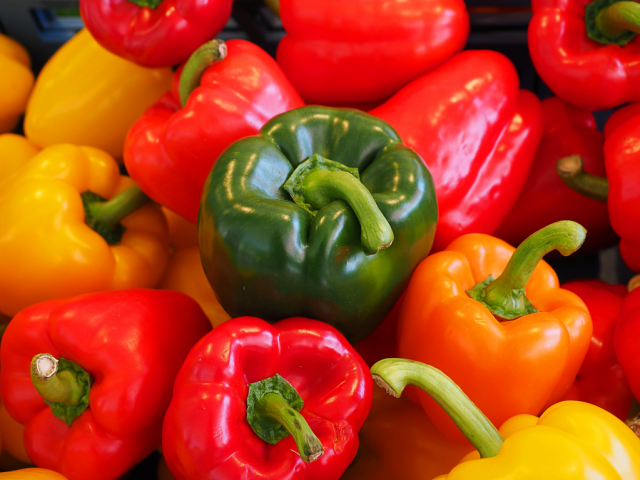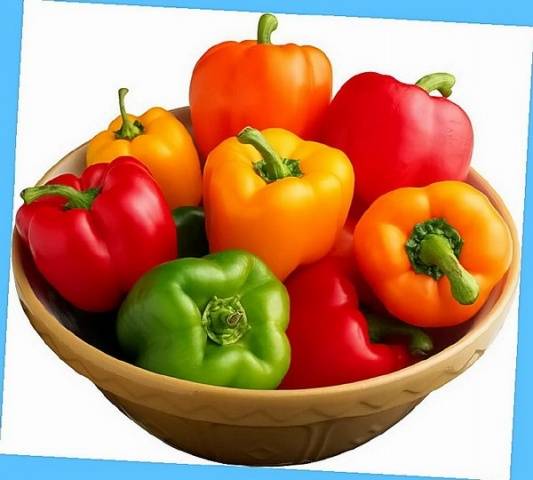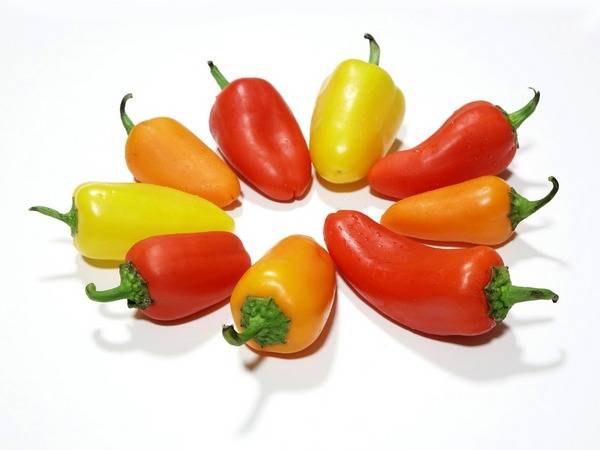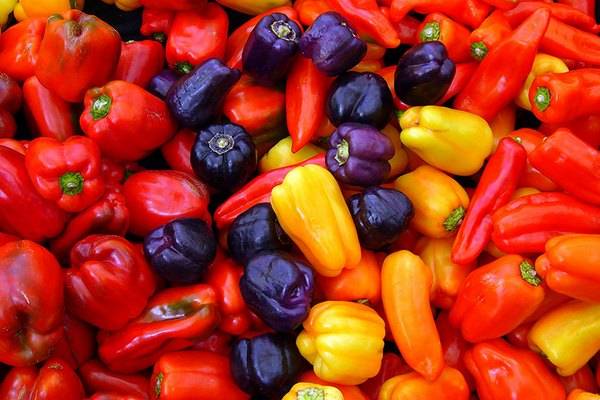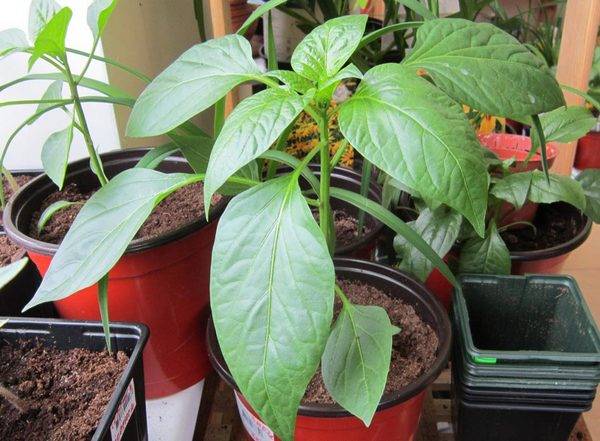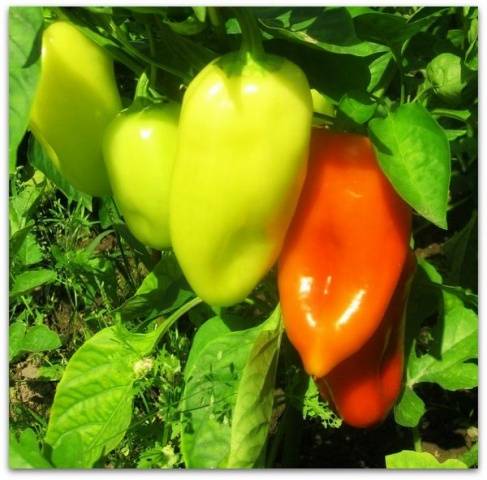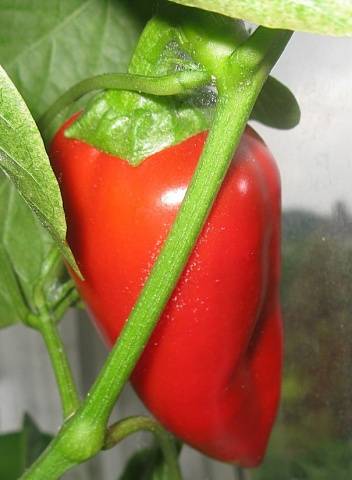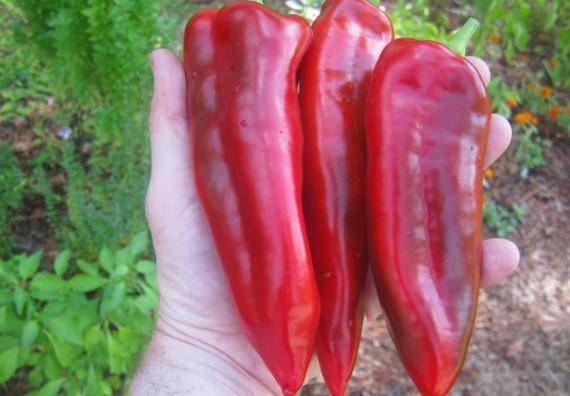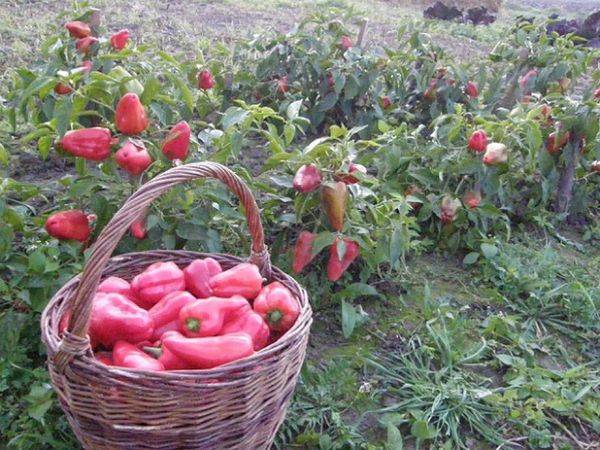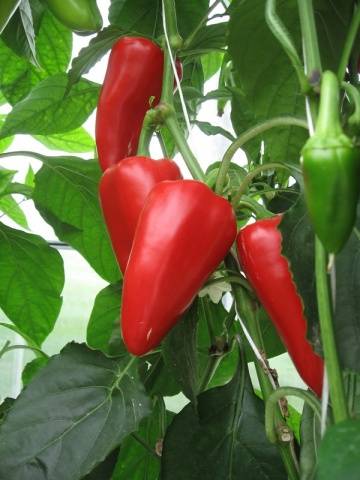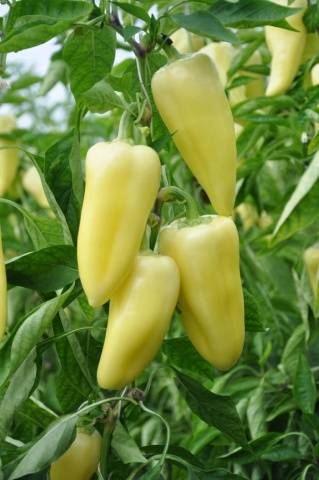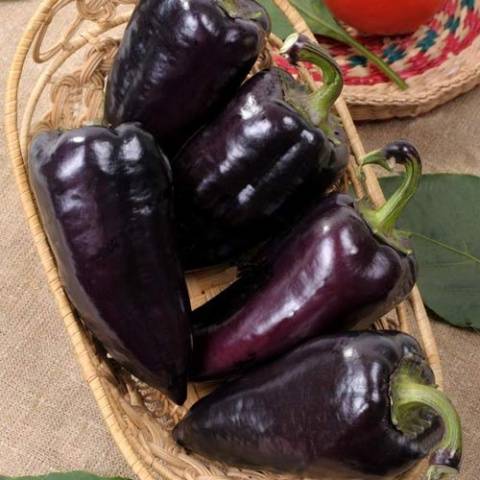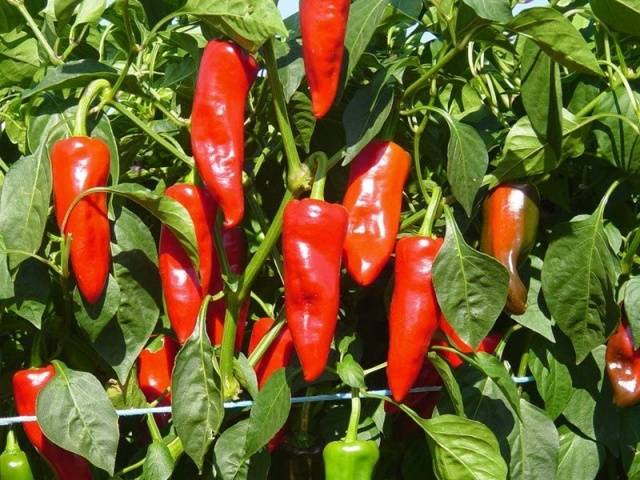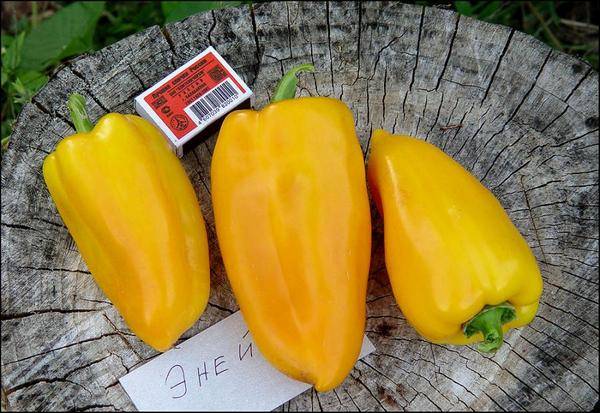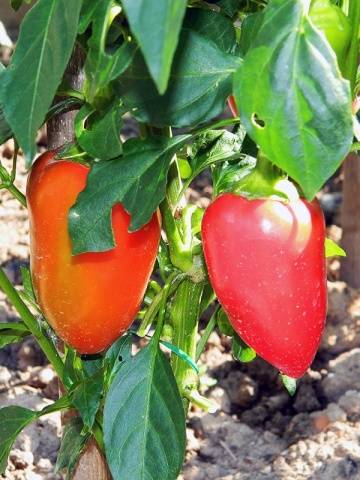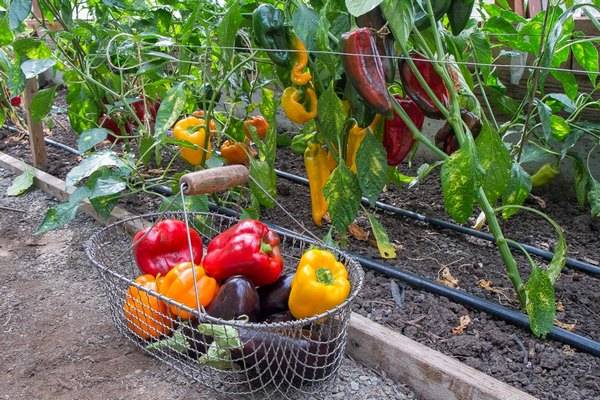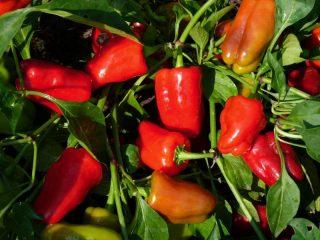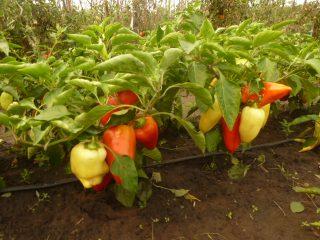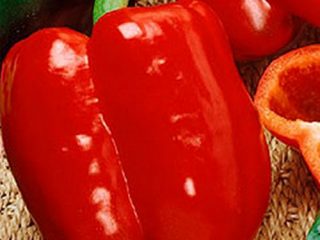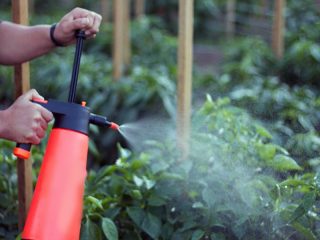Content
Sweet peppers are an indispensable ingredient in salads, sauces and other dishes. This vegetable contains several vitamins, for example, the dose of vitamin C in bell peppers is 10 times higher than in onions. In addition, there is vitamin A (carotene), vitamins B and PP. Thanks to its usefulness and excellent taste, you can find a bed of peppers in almost every summer cottage. Early varieties of pepper are especially loved by domestic gardeners.
Why exactly early-ripening peppers are of more interest to farmers, as well as how to choose a variety, and what are the differences between peppers - everything is in this article.
Ripening time for bell peppers
Pepper differs from other vegetable crops in its long ripening period. The Russian summer may not be enough for the fruits to ripen. After all, the average growing season for pepper is considered to be 120-130 days.
Breeders are working to develop the earliest varieties of peppers that will have time to grow and produce a good harvest before the onset of the first cold weather. Today, many such early-ripening varieties are known, among them there are also super-early ones that bear fruit within 80-90 days after sowing the seeds in the soil.
Early ripening peppers are varieties that produce ripe fruits on the 90-110th day after sowing the seeds. This growing season is still not enough for a full cycle, because peppers love warmth, which means they can be planted in the ground no earlier than mid-May.
To speed up the ripening process, gardeners plant these vegetables in seedlings. Seedlings of early ripening varieties begin to be prepared in late February - early March.
With this approach, you can get a harvest of ripe fruits by mid-summer. And, if you choose the variety correctly, fresh vegetables will grow in the garden right up to the autumn frosts.
Which type of bell pepper to choose
To choose the best varieties, you need to decide what they should be. The science of selection does not stand still - today hundreds of varieties and hybrids of bell pepper are known. Each of them has its own strengths:
- productivity;
- disease resistance;
- resistance to low temperatures and other climatic conditions;
- taste qualities;
- wall thickness, that is, the “fleshyness” of the fetus;
- height and branching of the bush;
- soil composition requirements;
- conditions of care.
Based on these factors, they choose best varieties of pepper for your site. If you need vegetables for sale, it is better to choose one of the productive hybrids.Vegetables for your own needs should first of all be tasty and healthy - choose “meaty” peppers with good taste.
For growing in heated greenhouses, a more suitable option is indeterminate varieties. The height of bushes of this type is unlimited - from one meter. From each giant bush it will be possible to remove several kilograms of vegetables. But in open ground it is more convenient to plant low-growing crops - they will not be damaged by wind and rain, it will be easier to harvest, and there is no need to tie up the bushes.
The variety's resistance to cold is important for regions with unstable weather and late summer. But resistance to diseases and viruses is important always and everywhere.
Based on the above considerations, it is necessary to select varieties of bell pepper that best suit the conditions of the site and the owner’s needs.
"Lumina"
This early-ripening pepper is one of the first to appear on vegetable shelves. It differs not only in terms of ripening, but also in its unpretentiousness. It can be grown in any soil; the variety is not afraid of unfavorable weather conditions or drought.
The size of the fruit is average - the weight reaches 110 grams. The peel is whitish-green, sometimes has a pink tint. The shape of the fruit is cone-shaped. The aroma is weak, the flesh tastes sweet, but watery.
The Lumina variety pleases with high yields. The bushes, although small, have many ovaries. The fruits ripen together. The plant rarely gets sick.
The fetal wall is about 5 mm thick. This vegetable is good for stuffing and pickling, but its taste may not be enough for salads or lecho. But “Lumina” tolerates transportation and long-term storage well – vegetables retain their presentation and the entire set of vitamins for up to three months.
"Ivanhoe"
Another well-known early-ripening variety, the fruits of which can be eaten already on the 113th day after planting the seeds for seedlings. At this point, the peppers are white or cream-colored, but their taste is not yet fully expressed. The biological maturity of vegetables occurs on the 130th day after planting - the fruits become orange or red, have a strong aroma and sweet taste.
The thickness of the walls of the fruit is 6-7 mm, the size is average. The weight of one pepper can reach 120 grams, its shape resembles an elongated cone. The fruit is divided into four chambers by partitions and contains many seeds inside.
"Ivanhoe" can be grown both in a greenhouse and in open ground. This variety produces high yields - about 8 kg per square meter. But a cold, long spring and summer without rain can significantly reduce the yield of peppers.
The plants are short and compact. They are easy to care for; there is no need to tie them up or form bushes. The culture is resistant to some diseases and viruses.
The fruits can be used for a variety of purposes: eaten fresh or canned.
"Marinka's tongue"
This variety produces consistently high yields - even under unfavorable growing conditions, about 12-15 fruits can be harvested from each bush.
The bushes have an average height of up to 70 cm, but need staking because the fruits are quite large and heavy ones - they can break off branches.
The weight of one “Marinka tongue” pepper, with proper care, can reach 230 grams, the average size is 15-180 grams. The fruit has the shape of an elongated cone, the vegetable is slightly curved. The color of the peel is bright red or deep cherry.
The wall thickness of the fruits of this variety is heterogeneous - at the top it is 7-8 mm, and at the bottom it can reach 13 mm. The taste of peppers is very high - they have a bright aroma and a very rich, “recognizable” taste. The vegetable is great for preparing salads, appetizers and other dishes.
"Triton"
The variety can be classified as super early - the first fruits are eaten already on the 100th day after planting in the ground. This pepper is even more unpretentious than the previous “Marinka’s tongue”.
The yield of the variety is simply impressive - up to 45 ripe fruits can be harvested from each bush. The mass of each will be only 130 grams, the shape is cone-shaped, slightly rounded. The color of a ripe vegetable can be yellow, red, or orange.
"Triton" can be grown in the garden even in the southern part of Siberia; for colder regions only the greenhouse method is suitable.
An important feature of this pepper, which a gardener should know about, is that the first ovary from the bush must be removed. If this is not done, the growth of the plant will stop, the fruits will become ugly and few in number.
"Atlant F1"
Hybrid pepper with early ripening - the harvest can be harvested on the 110th day after planting. The height of each bush reaches 110 cm, so it is best to grow the variety in a heated or unheated greenhouse. The branches must be tied up, especially if the hybrid is planted in a garden bed.
The fruits are considered very large - their weight often exceeds 350-400 grams.The shape of the pepper is barrel-shaped, slightly elongated. The walls are very thick - the flesh is “fleshy”.
Hybrid "Atlant F1" has high taste qualities. It can be used both fresh and processed.
"Charm"
Early ripening pepper of hybrid origin ripens on the 110th day after sowing seeds for seedlings. A distinctive feature of the variety is high yield. If the seedlings are planted according to the correct pattern (40x60 cm), the plants have enough fertilizer and moisture, up to 12 kg of excellent fruit can be harvested from one meter.
The bushes of the hybrid “Charm” are semi-spreading, their height reaches 80 cm. The plant tolerates low temperatures and is protected from most diseases and viruses. The fruits grow medium-sized - the weight of one rarely exceeds 100 grams. The walls of the pepper are of medium thickness - about 5 mm. When technically ripe, vegetables are colored green or yellow color, after full ripening they turn red. The pulp has an excellent taste and pronounced aroma.
"Snow White"
Another high-yielding a variety of bell pepper that allows you to collect up to 7 kg of vegetables from each square meter of land.
The height of the bushes is small - only 50 cm, but they have a lot of ovaries that ripen very quickly and at the same time. Most often, the variety is grown in low greenhouses or small greenhouses, but “Snow White” is also suitable for planting in open ground.
The peppers themselves are small - their weight reaches only 100 grams. The shape of the fruit is cone-shaped, standard. Each is about 12 cm long and has a maximum diameter of 7 cm.
At first, the peppers are white, but after biological maturity they become bright red. The plant is protected from diseases and pests.
"Othello"
A hybrid with early ripening - the growing season is about three months. The plant is semi-spreading, compact, but has a fairly large height - the bush reaches 80 cm. It is recommended to plant the hybrid in greenhouses and panics, which should be quite high and spacious. In the southern and central regions of Russia, Othello pepper can also be planted in open areas; on cold nights, it is better to cover the seedlings with film or agrofibre.
Peppers do not grow very large, but they have an interesting color - at the stage of technical maturity they are purple, and after biological maturation they become brown.
The hybrid is considered high-yielding, but for the maximum number of fruits, the plants require careful care: timely watering, fertilizing, loosening the soil. With this care, the yield can be about 9 kg per square meter.
"Flame"
The fruits of this hybrid ripen a little later than the others, but the variety is distinguished by high yields. The bushes grow up to 130 cm in height, so it is better to plant them in a greenhouse, where the plants will be protected from wind and precipitation.
The bushes definitely need to be tied up, because they have many side shoots. There are few leaves on the branches, but there are enough ovaries.
Peppers have thick walls and are considered “meaty” and juicy. The size of one fruit is small - the weight is often in the range of 130-150 grams. At the stage of technical maturity, peppers are colored yellow, and after full ripening they become bright scarlet, similar to flames.
Gardeners love the hybrid “Flame” for its high yield (up to 8 kg per meter), excellent taste, good shelf life and transportability.Pepper is excellent for growing commercially and has a high cost.
"Aeneas"
Peppers of this variety are very large and thick-walled. The thickness of their pulp reaches 9 mm. The shape of the fruit is a cone with rounded sides. The variety is especially valued for its high content of vitamin C in fruits and excellent taste characteristics.
The fruits are yellow in color and have an excellent presentation. Peppers can be transported long distances and stored for two months.
"Siberian Prince"
Belongs to the varieties of Siberian selection - this pepper is intended for cultivation in the Urals or Siberia. Based on this, we can immediately say that pepper is resistant to low temperatures and is not afraid of a lack of heat and sun.
The variety is grown both in greenhouses and in open ground, but it was created specifically for unprotected beds, so you can safely plant it directly on the site.
The fruit has a standard cone shape. Its surface is shiny and smooth. At technical maturity, peppers are colored yellow, and after biological maturation they become red. The weight of vegetables is average - from 100 to 150 grams.
They love the “Siberian Prince” variety for its durability and unpretentiousness, as well as for its excellent taste and strongly pronounced aroma.
Which variety is better
There are hundreds of varieties and hybrids of sweet pepper, and it is very easy to get lost in this diversity. How to find “your” variety of bell pepper? This can only be done experimentally: every season, plant several varieties from those listed in this article.
Everyone's tastes are different, so the taste profile of the best pepper is highly individual. Buying early sweet pepper seeds, it is necessary to consult about the yield of the variety, its durability, cold resistance, and compactness. To provide your family with fresh vegetables for the entire warm season, you can plant several varieties with different growing seasons.
